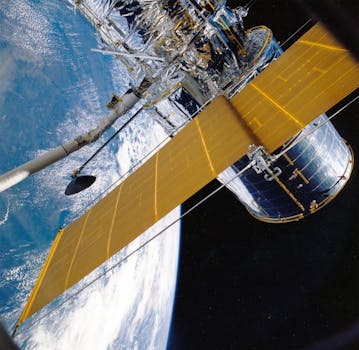Connecting the Globe: The Impact of Orbital Technology on Global Communication

Connecting the Globe: The Impact of Orbital Technology on Global Communication
Orbital Technology has revolutionized the way we communicate, enabling instant connectivity across the globe. With the help of satellites and other orbital technologies, people from different parts of the world can now communicate with each other effortlessly. In this article, we will explore the impact of orbital technology on global communication, its benefits, and future developments.
Orbital technology has made it possible to transmit data, voice, and video signals across the globe, connecting people from different cultures, languages, and time zones. This has enabled global communication, facilitating international business, education, and cultural exchange. The use of satellites has also enabled the provision of internet services to remote and underserved areas, bridging the digital divide and promoting digital inclusion.
The History of Orbital Technology
The concept of orbital technology dates back to the 1950s, when the first artificial satellite, Sputnik 1, was launched by the Soviet Union. Since then, there have been numerous advancements in orbital technology, with the launch of communication satellites, navigation satellites, and weather satellites. The development of geostationary satellites, which remain stationary above a specific point on the Earth’s surface, has enabled the provision of continuous communication services to a specific region.
The introduction of low-Earth orbit (LEO) satellites has also revolutionized the field of orbital technology. LEO satellites operate at an altitude of around 160 to 2,000 kilometers, enabling the provision of high-speed internet services to remote and underserved areas. The use of LEO satellites has also enabled the development of satellite constellations, which are networks of satellites that work together to provide global coverage.
The Benefits of Orbital Technology
Orbital technology has numerous benefits, including the provision of global communication services, enabling international business, education, and cultural exchange. The use of satellites has also enabled the provision of emergency services, such as search and rescue operations, and disaster response. Orbital technology has also enabled the development of navigation systems, such as GPS, which has revolutionized the field of transportation and logistics.
The use of orbital technology has also enabled the provision of weather forecasting services, enabling the prediction of weather patterns and the issuance of early warnings for natural disasters. The use of satellites has also enabled the monitoring of environmental changes, such as climate change, deforestation, and ocean pollution.
Future Developments
The future of orbital technology looks promising, with numerous developments on the horizon. The development of new satellite constellations, such as OneWeb and Starlink, is expected to enable the provision of high-speed internet services to remote and underserved areas. The use of advanced technologies, such as 5G and quantum computing, is also expected to enable the development of new satellite-based services, such as satellite-based 5G networks and quantum encryption.
The development of reusable launch vehicles, such as SpaceX’s Falcon 9, is also expected to reduce the cost of accessing space, enabling the launch of more satellites and the development of new space-based services. The use of artificial intelligence and machine learning is also expected to enable the development of more efficient and effective satellite systems, enabling the provision of better services to users.
Conclusion
In conclusion, orbital technology has revolutionized global communication, enabling instant connectivity across the globe. The benefits of orbital technology are numerous, including the provision of global communication services, enabling international business, education, and cultural exchange. The future of orbital technology looks promising, with numerous developments on the horizon, including the development of new satellite constellations, advanced technologies, and reusable launch vehicles.